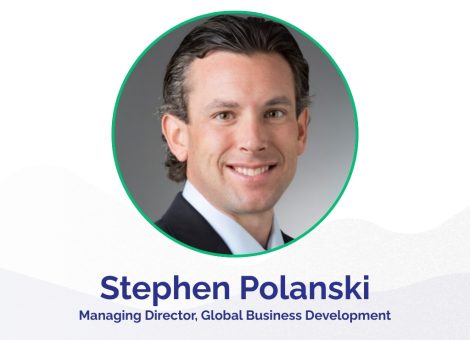Predictions for 2022: Oliver Shaw's location intelligence predictions for 2022
Data will be crucial for retailers to navigate long term changes brought on by the pandemic
We can all remember a time in early 2021 when we were hoping for a return to normal; or at least, as the term was coined, a ‘new normal’. With the roll-out of vaccines and Covid-19 starting its retreat, it seemed like ‘normal’ was on the horizon. But the current situation and the emergence of Omicron has demonstrated once again that these hopes are far from becoming a reality. What’s more, they may never become a reality.
As we continue living with Covid-19, behaviours that were formed at the height of the pandemic are persisting, and people have become very used to different ways of doing things. Everything from how people shop and work, to how they commute has changed and this has had vast knock-on effects for fuel and traditional retailers.
For example, ongoing restrictions have seen significant staffing issues for retailers, and shifting mobility patterns – with more people staying local rather than travelling into city centres – means that fuel prices have been in flux.
Retailers must understand that the key factors that will make or break for their business
To navigate through this period of ongoing change and economic difficulties, retailers must understand key factors that will be make or break for their business. Questions like ‘how will lockdowns affect me?’, ‘what is my customer base going to do?’, ‘how is the price of my stock going to change due to inflation?’ and ‘what does that mean in terms of SKU availability?’ all need answers, and this relies on having the right data sets to paint a full picture of your market.
Essentially, for retailers to adapt and be flexible in the face of continued changes to the economic landscape and the consumer behaviour that was once assumed to be temporary, they need data to inform what steps to take next. Without this, they’ll be charting a course for 2022 without a proper map.
Location intelligence will be a deciding factor in retailers’ success
One of the most difficult challenges for retailers in 2021 was knowing how to best operate their store network. Decisions about closures or openings during a period of shifting consumer behaviour could have long-lasting implications for profitability, so they’re decisions business leaders don’t want to get wrong.
In the coming year, retailers will rely on data more than ever to help inform their location choices. For some, it may make sense to stick to the city centres where footfall was traditionally high. But for others, moving into smaller communities and towns could be the key to unlocking much sought-after revenue. Location intelligence data will play a central role in these decisions and will ultimately mean the difference between success and failure for many individual stores in 2022.
Retailers will invest in collaborations to beat the competition
2021 forced many retailers to make tough decisions, and saw more brands adopt completely new ways of operating; for example, pureplay eCommerce retailers opened physical stores, and traditional physical retailers re-imagined what in-store experiences look like.
To grow in 2022, retailers will need to keep reinventing their businesses and finding new ways to add value for increasingly demanding consumers. Navigating such a turbulent landscape will be a significant uphill battle for retailers, and they’ll need to tap into the right data sets, such as mobility, location viability, in-store footfall, and competitor analysis, to know where exactly to focus to succeed.
Retailers are likely to create partnerships with complementary brands
An area that many retailers are likely to explore in 2022 is partnerships with complementary brands. Much like when Starbucks opened a site inside an Amazon Go store, there are almost endless ways for brands to partner up to deliver value for consumers, and themselves. But it’s about having the right data to show exactly what partnerships, and where, will deliver the most value.
Tapping into location and sales data can help to identify exactly which partnership will deliver ROI, and understanding what your customers want from an in-store experience will be critical for retailers wanting to take advantage of collaborations in 2022.
About Oliver Shaw, CEO, Kalibrate Group

Oliver’s early career was spent in sales and marketing roles in consumer financial services helping to build fast-growth brands like Capital One and Ageas Insurance. Oliver moved into the technology sector in 2009 joining IRIS Software.
He has spent the last 10 years in several executive roles, including Divisional CEO and Merger and Acquisition Director, helping to build one of the largest privately-owned software companies in the UK with a valuation of over £1 billion.
Read more articles about:
Location intelligenceSubscribe and get the latest updates
You may unsubscribe from our mailing list at any time. To understand how and why we process your data, please see our Privacy & Cookies Policy
Related posts
Meet the Kalibrate team
Delivering the Kalibrate Standard: Stephen Polanski
This blog series explores how members of our team help our clients answer their most challenging questions. Here, we...

Meet the Kalibrate team
Delivering the Kalibrate Standard: Kent Schlesselman
At Kalibrate, our team of experts works hand-in-hand with clients to ensure they receive the right solution for their...

